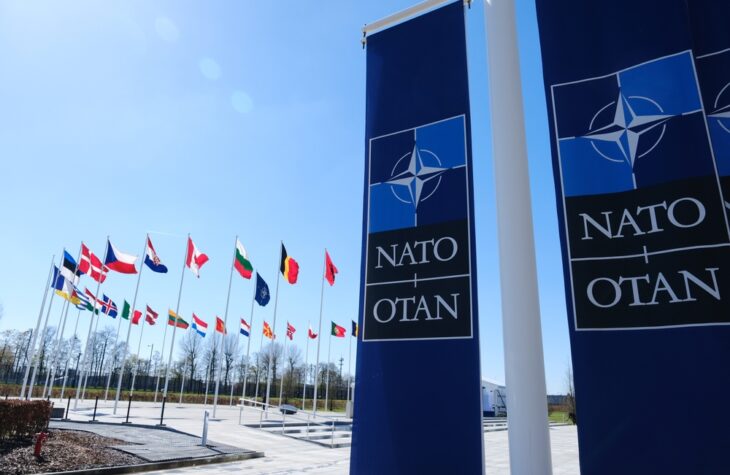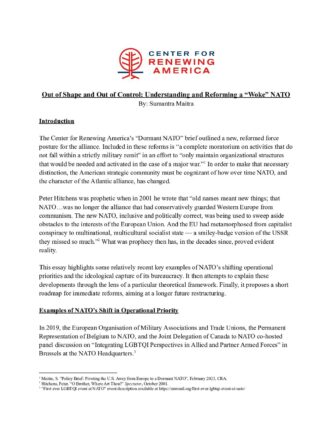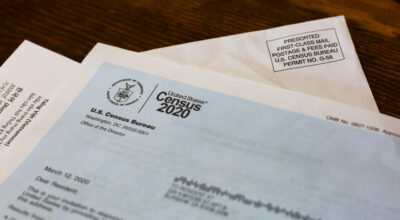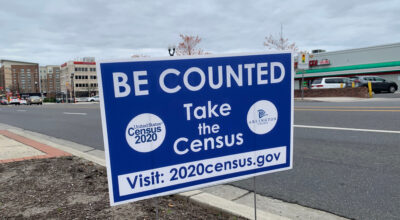
Out of Shape and Out of Control: Understanding and Reforming a “Woke” NATO
Introduction
The Center for Renewing America’s “Dormant NATO” brief outlined a new, reformed force posture for the alliance. Included in these reforms is “a complete moratorium on activities that do not fall within a strictly military remit” in an effort to “only maintain organizational structures that would be needed and activated in the case of a major war.”1 In order to make that necessary distinction, the American strategic community must be cognizant of how over time NATO, and the character of the Atlantic alliance, has changed.
Peter Hitchens was prophetic when in 2001 he wrote that “old names meant new things; that NATO…was no longer the alliance that had conservatively guarded Western Europe from communism. The new NATO, inclusive and politically correct, was being used to sweep aside obstacles to the interests of the European Union. And the EU had metamorphosed from capitalist conspiracy to multinational, multicultural socialist state — a smiley-badge version of the USSR they missed so much.”2 What was prophecy then has, in the decades since, proved evident reality.
This essay highlights some relatively recent key examples of NATO’s shifting operational priorities and the ideological capture of its bureaucracy. It then attempts to explain these developments through the lens of a particular theoretical framework. Finally, it proposes a short roadmap for immediate reforms, aiming at a longer future restructuring.
Examples of NATO’s Shift in Operational Priority
In 2019, the European Organisation of Military Associations and Trade Unions, the Permanent Representation of Belgium to NATO, and the Joint Delegation of Canada to NATO co-hosted a panel discussion on “Integrating LGBTQI Perspectives in Allied and Partner Armed Forces” in Brussels at the NATO Headquarters.3
It was, “the first ever event on LGBTQI Perspectives at NATO,” according to its description, aimed at providing a forum where nations and institutions within the alliance—working on integrating diversity and inclusion perspectives in defense—could share tactics about the “best practices in promoting Lesbian, Gay, Bisexual, Transgender, Queer and Intersex (LGBTQI) rights, equality and inclusion.” The official description of the event further argued in favor of a host of such ideas, with no corroborating evidence, including: that LGBTQI integration in armed forces is a matter of promoting, and that all willing to serve their country “deserve” to be recognized and respected for who they are (regardless of talent or efficiency). It also argued that “As an international organisation based on common values (values of individual liberty, democracy, human rights and the rule of law), NATO should lead by example, by promoting LGBTQI rights and by acting towards inclusive armed forces. International organisations should also collaborate on this issue.”4
This event was exemplary and only the tip of the issue of the military alliance involving itself in social politics. NATO marked an International Day Against Homophobia in 2017 with a tweet by Secretary General Jens Stoltenberg: “LGBT people everywhere deserve dignity, inclusion and freedom from fear. Diversity makes our open societies stronger and safer.”5 NATO also hosted its first-ever internal conference on LGBTQI+ perspectives in the workplace in 2021.6 This was NATO funded, organized, and staff led, by the “Proud @ NATO” group, with speakers such as former Secretary General Jens Stoltenberg arguing that “diversity and inclusion is at the heart of who we are and what we do… drawing on all resources and all experiences makes us stronger, and better equipped to face the future.” Stoltenberg added that the concept of “allyship” in the workplace includes “people who do not identify as LGBTQ+ themselves, yet want to see a more inclusive world.” Documenting how NATO is a world leader in diversity, the event stated that NATO was also a world leader in recognising same-sex marriage, with the organization providing equal spousal benefits to same-sex couples by July 2002, at a time when only the Netherlands recognised same-sex marriages.7
Between 2002 and 2024, NATO changed, in its own words, from an organization that was only tolerant of diversity to one that actively promotes diversity and inclusion policies across all its activities.8 NATO priorities reflected that shift from warfighting to auxillary interests, such as the Preventing and Responding to Conflict-Related Sexual Violence initiative. To further that cause, in a policy brief NATO stated that the institution will engage “with relevant International Organisations, Non-Governmental Organisations, partners, civil society, including women’s rights organisations and women-led civil society, at-risk populations and other appropriate actors, including coordination with host nations as appropriate” during a conflict or “throughout the mission cycle to identify and analyse threats to civilians using the appropriate civil-military coordination mechanisms.”9 To further that cause, NATO also stated that it needs to provide mandatory “pre-deployment” training to host nation militaries, to “all personnel in NATO missions, operations and Council-mandated activities.”
Similarly, in 2022 NATO’s Strategic Concept stated the need to integrate the Women, Peace and Security (WPS) agenda across NATO’s core tasks (deterrence and defence, crisis prevention and management, and cooperative security), and stated that “NATO will continue to advance gender equality as a reflection of its values.”10
The Secretary General’s “Special Representative for Women, Peace and Security,” a position that was created in 2012 and made permanent in 2014, was key to this agenda. Accordingly, “Gender Advisors” are currently in place across NATO’s military structures and in all operations and missions. Originally deployed in 2009 to NATO’s Strategic Commands and the International Security Assistance Force in Afghanistan, there are now Gender Advisors deployed across NATO structures and missions, including NATO Mission Iraq and NATO’s Kosovo Force. “The NATO Committee on Gender Perspectives promotes the integration of gender as a strategy for making the concerns and experiences of both women and men an integral dimension of the design, implementation, monitoring and evaluation of policies, programmes and military operations.”11
The NATO International Military Staff (IMS) Office of the Gender Advisor is now a permanent fixture within NATO command structure, aiming to provide “strategic advice” on the implementation of the WPS Agenda at NATO and supporting the integration of the gender perspective into NATO missions, operations, and activities. These include, in NATO’s own words, strategies of “Gender mainstreaming”; that work to achieve total gender equality by assessing the implications for women and men of any planned action, “in all areas and at all levels.”12
The NATO Policy on Women, Peace and Security (2024), argued, among other things, that “Climate change is a defining challenge of our time” and that NATO recognizes the compounding impacts of gender inequality, conflict, and climate change on women and girls, with implications for security. Moreover, it argues that in order to emphasize that women have a valuable role to play in decision-making, NATO needs to comprehensively address climate change related security challenges. It further argued that these “impacts underscore the need to integrate gender perspectives in taking forward NATO’s Agenda on Climate Change and Security and in its focus on awareness, adaptation, mitigation, and outreach.”13 The latest Women, Peace and Security and Human Security Bulletin, was all about “Ukraine’s women warriors.”14
In 2024, the IMS Office of the Gender Advisor hosted a monthly Deep Dive session on Multi-Domain Operations (MDO) and the Gender Perspective, suggesting that NATO plays a “critical” role in incorporating gender perspective into MDO.15 The “Legal Analyst Capability and Cooperation Department at the Nordic Centre for Gender in Military Operations (NCGM)” defined gender analysis as the systemic examination of information related to gender differences and social relations between men and women that allows NATO to identify and understand gender inequalities.
DEI at NATO
The use of DEI in both terminology and planning is enmeshed in NATO administration. NATO states that “NATO derives its strength from its talented and diverse workforce. The Alliance’s proactive strategies aim to attract, develop and retain a mix of people with different skills, backgrounds, experiences and cultures. Access to the broadest possible range of talent is essential to generate innovative ideas and insights, and represent the diversity of NATO countries.”16
While that is a noble aim, the reality is different. The practice of DEI in NATO operates functionally as the maintenance of an ideological edifice. Consider some key examples. NATO HQ hosted an event titled “We Are All Allies in the Face of Racial Discrimination,” in which Admiral Rob Bauer, Chair of the NATO Military Committee, said the following: “The call for racial justice and equity around the world has grown louder and louder over the years. And now that NATO has entered into a new era of collective defence, the urgency of that call has grown even more. We are defending not only the physical safety of our people, but also the democratic values we all hold dear. That means that not only should we practice what we preach… but we also have a responsibility to ensure that we create a safe, free, inclusive environment. Collective defence is truly a task for the collective, we cannot afford to waste talent… because we are not inclusive enough.”17 Panelists included the Assistant Secretary General for Policy and Planning Division, Angus Lapsley, who underlined policies to achieve greater diversity in every institution within NATO. Solange Ndagijimana-Munezero, from NATO Headquarters Consultation, Command and Control Staff, and Patricia Nguyen, from the IMS Gender Advisor’s Office, and “NATO Elevate Diversity” a Staff Resource Group, suggested examining NATO career issues “through the unique lens of employees of colour.”
NATO’s diversity measures also include the Diversity, Inclusion, and Accessibility Action Plan to take proactive and measurable steps towards equality. The NATO Gender Balance and Diversity Task Force was established at the 2002 Prague Summit with the aim of actively pursuing a diversity policy at NATO Headquarters, and with the long term goal of an increase of the overall number of women employed in the international staff positions, an increase in the overall number of women applying to work for the organization, and an increase in the overall number of women in managerial positions.18 NATO’s first Staff Resource Group, “PROUD@NATO” was officially established in 2020 to further LGBTQ+ perspectives at NATO.19
Around 200 participants from 44 Allied and Partner Nations attended the NATO Committee on Gender Perspectives Annual Conference themed “Gender Analysis in Action,” where advisors on Gender Issues explained concrete action plans, aims and strategies to display actions in gender balanced recruitment.20
In 2023, NATO International Military Staff Office of the Gender Advisor discussed challenges to women and girls in Sahel (Africa) and explored how different local and international actors are promoting the Women, Peace, and Security agenda in the Sahel, where researchers discussed, among others, challenges facing women in Africa and “expectations of excellence, the double burden of being a good wife and mother before pursuing a career, and the need for a man’s support to succeed.”21 January 2024 saw NATO headquarters welcome NATO Committee on Gender Perspectives Executive Committee to discuss NATO’s priorities for the integration of the gender perspective, where it was accepted that each NATO ally will designate “one active duty officer of senior rank (or civilian equivalent) as a delegate to learn and train about “latest national developments in gender approaches and tools for gender mainstreaming.”22
A recent particularly exemplary illustration of the interplay of domestic U.S. military structure and DEI in NATO was the interview of Lieutenant Colonel Lauranne, from the French army, who was the gender advisor for Allied Command Transformation in Norfolk, Virginia, with a task to help the U.S. military to “integrate gender perspective into all of the NATO command’s work strands and projects.”23 Saying that she suffered discrimination due to bad eyesight harming her combat opportunities, she was selected by the French ministry in charge of gender equality, diversity and equal opportunities to receive the “equality medal,” and trained at the NATO Gender Advisor Course organised by the Nordic Centre for Gender in Military Operations in Sweden. She added that work on gender mainstreaming helps “ensure our commitment to human rights and gender equality” and that “long-term gender equality contributes to stability and peace.”
Theoretical Explanation of NATO’s Shift in Priority
It is prudent to argue that not all these incidents and programs are evidence of a malevolent ideological operation or a result of some grand conspiracy. But they are the result of a massive, intellectually corrupting and debilitating bureaucratic bloat that has resulted in a growth of nonsensical projects manned by career bureaucrats whose interest encompasses everything other than great power war and deterrence. An argument is that these bureaucrats are not very influential and in no way affect the U.S. foreign policy. But there is another side to that story. Some of it is also a result of American foreign policy and foreign funding itself, as evident above. And the influence of NATO’s “woke” policies bleeds both ways. The factors that reinforce progressive ideological dogma on both sides of the Atlantic feed onto each other, forming a transnational progressive ecosystem.
Consider the European politicization of the U.S. Supreme Court’s Dobbs decision, overturning Roe v. Wade in the United States. The decision resulted in almost all NATO leaders immediately taking a side in America’s domestic debate.24 Then-British PM Boris Johnson commented that it was a big step backward. French President Macron tweeted, “I wish to express my solidarity with the women whose liberties are being undermined by the Supreme Court of the United States.” An era of “distrust in women and distrust in doctors is coming to an end,” German Justice Minister Marco Buschmann said, as the German parliament struck down a decade-old law that was meant to deter abortion advertisement. Canada’s Justin Trudeau said, “the news coming out of the United States is horrific,” a sentiment echoed by the Danish PM Mette Frederiksen, who said, “my heart goes out to the millions of American women who are now set to lose their legal right to an abortion. I can’t imagine the fear and anger you are feeling right now. A huge setback. The right to free abortion is one of the most fundamental rights that exists.” Belgian Prime Minister Alexander de Croo said that he was “very concerned about implications of the U.S. Supreme Court decision…and the signal it sends to the world.” Nicola Sturgeon, Scotland’s then first minister said it was “one of the darkest days for women’s rights in my lifetime.”25
President Biden, as a result, seizing on the allied support while speaking at the end of the NATO summit in Spain, called the Supreme Court’s decision “destabilizing,” and called for a change to the Senate’s filibuster rules to codify the right to an abortion and the right to privacy.26 Politico then reported that at least four diplomats during the NATO summit aired concerns about the decision, with several NATO heads of state and government releasing statements affirming the right to an abortion immediately after Friday’s court decision.27 Foreign Policy argued that Roe reversal exposed the “Ever-Growing Value Gap” Between the U.S. and NATO, adding that it added to the “broader trend of domestic dysfunction” that undermined U.S. President Joe Biden’s democracy agenda at NATO summit.28
None of this falls within customary diplomacy, much less the original remit of the NATO treaty.29 It was until recently the norm for elected allied leaders to not openly comment on the internal politics of their hegemonic protector, nor was it normal for an elected President to take the side of other allied member states against his domestic opponents.
Why, therefore, is the study of NATO’s changing character important? Quite simply because both NATO bureaucracy and allied powers in NATO often undermine democratic debate within the U.S., while at the same time, NATO’s major funder is still the American people. It is also important to note, that “woke” NATO policies have real costs to the security of a U.S. now constrained by resurgent near-peer rivals such as China and a revanchist Russia. Consider, as Jennifer Lind notes in a recent influential paper, why the current global distribution of power signals a return to bipolarity after almost a quarter century of unipolarity and hegemony.30 “Bipolarity will also likely transform U.S. grand strategy and alliances. The onset of unipolarity in the 1990s led the United States to expand its foreign policy ambitions, while many U.S. allies reduced their military capabilities. The North Atlantic Treaty Organization (NATO), in particular, grew increasingly lopsided in terms of leadership and resources.”31 Furthermore, the changing structure of the global distribution of power means that NATO is now unable to continue its core task, due to auxiliary interests, as evident above.
NATO’s new direction can be understood through the lens of NATO’s current philosophical bend, in light of John Fonte’s study of the core philosophical impulse of the current avatar of the Atlantic alliance, namely “Transnational Progressivism” (TP).32 Fonte describes TP, an instinct turbocharged during the post-cold war unipolarity, as having the following core tenets, a “redefinition of democracy and “democratic ideals”, a deconstruction of national narratives and national symbols, a promotion of the concept of postnational citizenship, with the idea of transnationalism as a major conceptual tool.33 The reasons were threefold. The sweeping sub-surface power grab by liberal internationalists in every western institution, the growth of DEI bureaucracy and the rise of the surplus elites, and the logic of unipolarity which allowed a massive expansion and bloat of American power.
Seen from that lens, NATO’s changed character is also a reflection of a “woke” State department, which results in an echo chamber of assorted research and think tank reports from both within the U.S. and outside, to further shape U.S. foreign policy discourse and debate. “In my study tour group’s meetings with Baltic officials, the question repeatedly came up of why the United States should risk blood and treasure in the defense of tiny countries along Russia’s border,” a Brookings article read, adding that “one suspects that if Russia were a place where Pride parades were allowed, its quarrels with the United States, and ours with it, would diminish.”34 Canada’s NATO Association called NATO to “act” against member states when they curb LGBT rights. “The aim of NATO enlargement is to promote “stability and cooperation,” with the goal of “building a Europe united in peace, democracy and common values.” NATO must therefore respond to the security crisis that the LGBTQ+ community faces at home.”35
In recent years, this has resulted in the Biden administration’s equity outreach employing NATO as an arm to promote liberal internationalism and global governance, as well as to transform the American military from within.36 As journalist Chris Rufo has reported: “the White House required each federal agency to submit detailed DEI progress reports regularly, appoint a chief diversity officer, and create ‘Agency Equity Teams,’ whose leaders were tasked with ‘delivering equitable outcomes.’” These requirements contributed to what the president called “an ambitious whole-of-government equity agenda.”37 As a result the agenda was spread by the State Department through the president’s “Memorandum on Advancing the Human Rights of Lesbian, Gay, Bisexual, Transgender, Queer, and Intersex Persons Around the World.” Since 2021, the State department and other foreign agencies were directed to observe and report on the “LGBTQI+” policies of our allies, to “broaden the number of countries willing to support and defend” the radical Left’s understanding of gender—for example, by funding pro-transgender “civil society advocates” in order to shift public opinion in those countries—and to tie in the principles of gender theory to America’s foreign-aid programs.”38 As one can surmise, the American government was fully complicit in transforming NATO, and gave European allies tacit permission to promote and lecture domestic opponents and conservatives on liberal internationalism and woke politics.
A Roadmap to Reform
No long term NATO reform can happen without the United States reforming its own State Department, and by virtue, its foreign policy. The U.S. is the largest contributor to NATO measured by GNP. That includes direct and indirect funding of NATO, as well as various State Department endeavors that primarily turbo-charge and promote a “woke” foreign policy. Therefore, NATO reform should start here at home.
The CRA model budget already highlights ways to cut woke bloat in the State Department apparatus, including defunding any future Equity Action Plan, and USAID, whose funds are used for projects like addressing “restrictive gender norms and inequalities.”39 As the model budget highlights, the State department’s family planning programs often also push abortion access and LGBT “awareness” across the world. The State Department also funded the British “Global Disinformation Index” to blacklist and block American conservative media companies. Tackling them would be a key signal to the rest of the world that the U.S. is determined to move forward with a value neutral and non-ideological foreign policy, based solely on geographical and strategic interests: a change from the last quarter century of grand-strategy laced with misplaced and often revolutionary liberal-internationalism and neoconservatism.
But NATO funding and structure will also need to change, for NATO to find its original intent and purpose. In order to do that, a few quick solutions should be initiated.40
NATO is bound to collect all defense expenditure data from NATO allies on a regular basis to present aggregate funding data. Accordingly, each ally’s ministry of defense submits a report of their current and future estimated defense expenditure breakdown. NATO could initiate a total cost breakdown of each ministry of defense’s audit to see how much of their defense expenses go towards DEI and related social projects, and deduct that portion from their aggregate spending expense. For example, if a NATO ally is spending a chunk of their defense budget on DEI related projects, they will be bound to show that as a separate breakdown to their data to NATO, and should know that any such expense will not be considered a core defense expenditure and accordingly will not be calculated towards the the expected 2 percent or more of GDP.
NATO should work more towards declassifying their International Board of Auditors for NATO reports and the financial statements of NATO Reporting Entities and make them available to the member states.41 These reports must include civil and military budgets as well as details of financial audit reports, highlighting any and every non-military expenditure that NATO undertook in the previous year.
NATO’s Strategic Concept needs to be overhauled to highlight NATO’s essential core tasks—currently that includes not only deterrence and defense, but also crisis prevention and management and cooperative security.42 That needs to be streamlined to purely deterrence and defense, to objectively reflect the original NATO alliance. Currently NATO’s efforts lead to “safeguarding” shared values, which often are subjective and are interpreted in various non-defense related agendas, such as climate change and human security, or the Women, Peace and Security agenda which is embedded in operations. All that should be rolled back. Any allied country whose policies or institutions likely result in a “blacklist” of Americans and affects their free speech rights, should not be considered aligned with American values anyway.
Conclusion:
In 1949, an authoritarian Portugal was a founding member of NATO, and as a member state Portugal remained authoritarian till 1974, without harming NATO’s core mission. Both the junta-led Greece and Turkey with several coups were members of NATO. The current government of Turkey is no epitome of liberal democracy. None of that mattered in NATO’s defensive performance, or affected its ideological framing. The recent bloat of an ideological bureaucracy within NATO is a historical aberration, an effect of material and structural factors such as unipolarity, and can be accordingly reversed without jeopardizing core alliance defense.
NATO is a defensive alliance, based on finite geography and structural and material interests. NATO serves well if it sticks to its defensive character and caters to its core area of interest, the North Atlantic. NATO’s character shift to an ideological vehicle of liberal internationalism either, at best, creates backlash among European populaces against American ideological overreach, or entices smaller states to shape U.S. grand-strategy by appealing to a vague and malleable “transnational progressivism.” At worst, it creates conditions where smaller protectorate states can interfere in American domestic politics, and NATO’s core missions change to humanitarian and ideological interventions. At a time of great power rivalry and emerging multipolarity, it is imperative to cut out that ideological fat that has been so divisive to the internal coherence of the American alliance system.
Endnotes
1. Maitra, S. “Policy Brief: Pivoting the U.S. Away from Europe to a Dormant NATO”, February 2023, CRA.
2. Hitchens, Peter. “O Brother, Where Art Thou?” Spectator, October 2001.
3. “First ever LGBTQI event at NATO” event description available at https://euromil.org/first-ever-lgbtqi-event-at-nato/
4. Ibid
5. “NATO Secretary General marks International Day Against Homophobia”, May 2017, https://www.nato.int/cps/en/natohq/news_143802.htm?selectedLocale=en
6. “NATO Headquarters hosts first-ever conference on LGBTQ+ perspectives in the workplace” March 2021, https://www.nato.int/cps/en/natohq/news_182424.htm?selectedLocale=en
7. Ibid
8. “Diversity, inclusion and accessibility at NATO” available at https://www.nato.int/cps/en/natohq/topics_64099.htm
9. “NATO Policy on Preventing and Responding to Conflict-Related Sexual Violence” May 2021, https://www.nato.int/cps/en/natohq/official_texts_184570.htm
10. “NATO Policy on Women, Peace and Security (2024)” July 2024, https://www.nato.int/cps/en/natohq/official_texts_227578.htm
11. “NATO Women, Peace and Security” October 2024, https://www.nato.int/cps/en/natohq/topics_91091.htm
12. “IMS Office of the Gender Advisor” November 2024, https://www.nato.int/cps/en/natohq/topics_101372.htm
13. “NATO Policy on Women, Peace and Security (2024)” July 2024, https://www.nato.int/cps/en/natohq/official_texts_227578.htm?selectedLocale=en
14. NATO WPS special bulletin on women defenders of Ukraine https://www.nato.int/nato_static_fl2014/assets/pdf/2024/6/pdf/2406-WPS-HS-Bulletin-6-en.pdf
15. “NATO Deep Dive Recap: Multi-Domain Operations and the Gender Perspective”, available at https://www.nato.int/cps/en/natohq/news_229326.htm?selectedLocale=en
16. “Diversity, inclusion and accessibility at NATO”, available at https://www.nato.int/cps/en/natohq/topics_64099.htm
17. “NATO officials and staff discuss racial diversity at NATO HQ”, available at https://www.nato.int/cps/en/natohq/news_214411.htm
18. “Diversity, inclusion and accessibility at NATO”, available at https://www.nato.int/cps/en/natohq/topics_64099.htm
19. Ibid
20. “The 47th NATO Committee on Gender Perspectives Annual Conference focuses on “Gender Analysis in Action” and celebrates the 25th Anniversary of the IMS Office of the Gender Advisor”, available at https://www.nato.int/cps/en/natohq/news_218951.htm?selectedLocale=en
21. “Deep Dive Recap: the Sahel and the Gender Perspective” November 2023, available at https://www.nato.int/cps/en/natohq/news_220947.htm?selectedLocale=en
22. “NATO headquarters welcomes the NATO Committee on Gender Perspectives Executive Committee”, available at https://www.nato.int/cps/en/natohq/news_222538.htm?selectedLocale=en
23. “Meet Lieutenant Colonel Lauranne, an advisor integrating gender perspectives into NATO command’s work”, available at https://www.nato.int/cps/en/natohq/news_223353.htm?selectedLocale=en
24. “Biden says America is leading. On abortion, Europeans disagree.” Washington Post, available at https://www.washingtonpost.com/politics/2022/06/26/biden-abortion-europeans/
25. “World Leaders React on Roe v. Wade” Wall Street Journal available at https://www.wsj.com/livecoverage/supreme-court-decision-roe-v-wade-6-24-2022/card/europeans-react-on-roe-v-wade-YQY9SVjtWc4K7DIfB0R8
26. “At NATO summit, Biden calls for Roe to be codified, backs filibuster exception for abortion rights” Spectrum News, available at https://ny1.com/nyc/all-boroughs/news/2022/06/30/biden-abortion-filibuster-roe-v-wade-supreme-court-nato
27. See, “The elephant in the NATO room: America’s Roe reversal” Politico, available at https://www.politico.com/news/2022/06/30/nato-roe-wade-response-00043305, and “European leaders decry U.S. restriction of abortion rights” Politico, available at https://www.politico.eu/article/europe-leaders-decry-us-restriction-abortion-rights-supreme-court/
28. “Roe Reversal Exposes the ‘Ever-Growing Value Gap’ Between U.S. and Allies” Foreign Policy, available at https://foreignpolicy.com/2022/07/06/us-abortion-dobbs-roe-biden-democracy-credibility-agenda/
29. See text, “The North Atlantic Treaty” 1949 https://www.nato.int/cps/en/natohq/official_texts_17120.htm
30. Lind, Jennifer, “Back to Bipolarity: How China’s Rise Transformed the Balance of Power”, International Security, https://direct.mit.edu/isec/article/49/2/7/125214/Back-to-Bipolarity-How-China-s-Rise-Transformed
31. Ibid
32. See, Seaton, Paul. “Transnational Progressivism and U.S.” Law and Liberty, August 2017
33. See Fonte, John. “Sovereignty or Submission: Will Americans Rule Themselves or be Ruled by Others?” September 2011.
34. “What does a Pride parade have to do with NATO? More than you might think.” Brookings, June 2019 https://www.brookings.edu/articles/what-does-a-pride-parade-have-to-do-with-nato-more-than-you-might-think/
35. “NATO Needs to Act When Member States Curb LGBTQ+ Rights” August 2022 https://natoassociation.ca/nato-needs-to-act-when-member-states-curb-lgbtq-rights%E2%80%AF%E2%80%AF%E2%80%AF/
36. “The Corrupting Influence of DEI on Military Education August 2024”, James G Martin Center https://www.jamesgmartin.center/2024/08/the-corrupting-influence-of-dei-on-military-education/
37. Rufo, C. “How Gender Ideology Captured the State Department” October 2024, City Journal https://www.city-journal.org/article/how-gender-ideology-captured-the-state-department
38. Ibid.
39. See, Center for Renewing America, Model Budget available at, https://americarenewing.com/issue/budget/
40. For NATO Budget breakdowns, see “Funding NATO”
41. NATO funding “Transparency and accountability” available at https://www.nato.int/cps/en/natohq/topics_111582.htm#tbl
42. “NATO unclassified, 2023 civil budget recommendation summary” https://www.nato.int/nato_static_fl2014/assets/pdf/2022/12/pdf/221214-CB_2023-ExecSum.pdf





